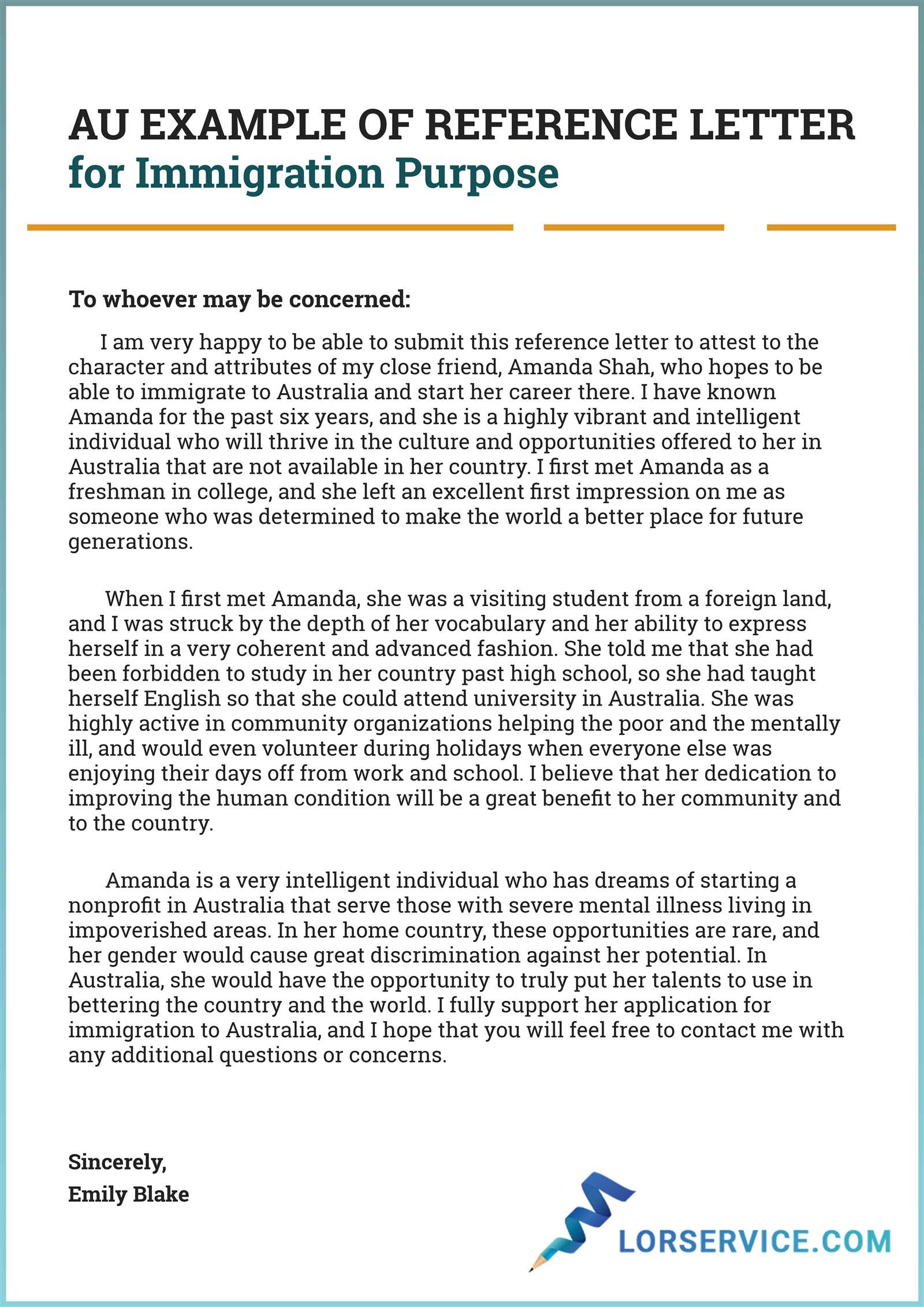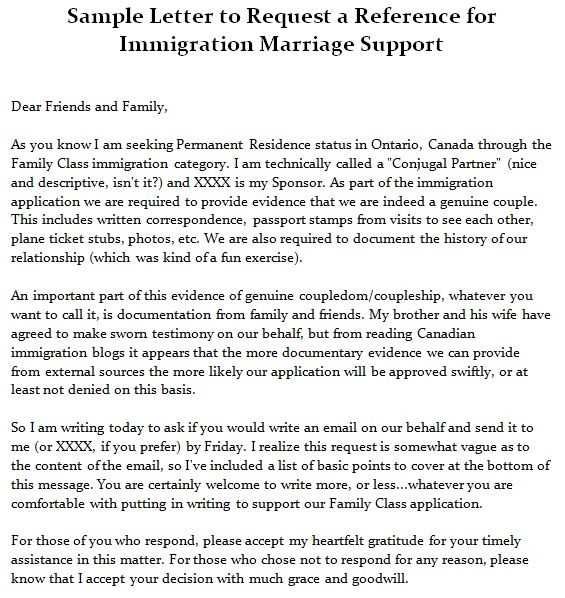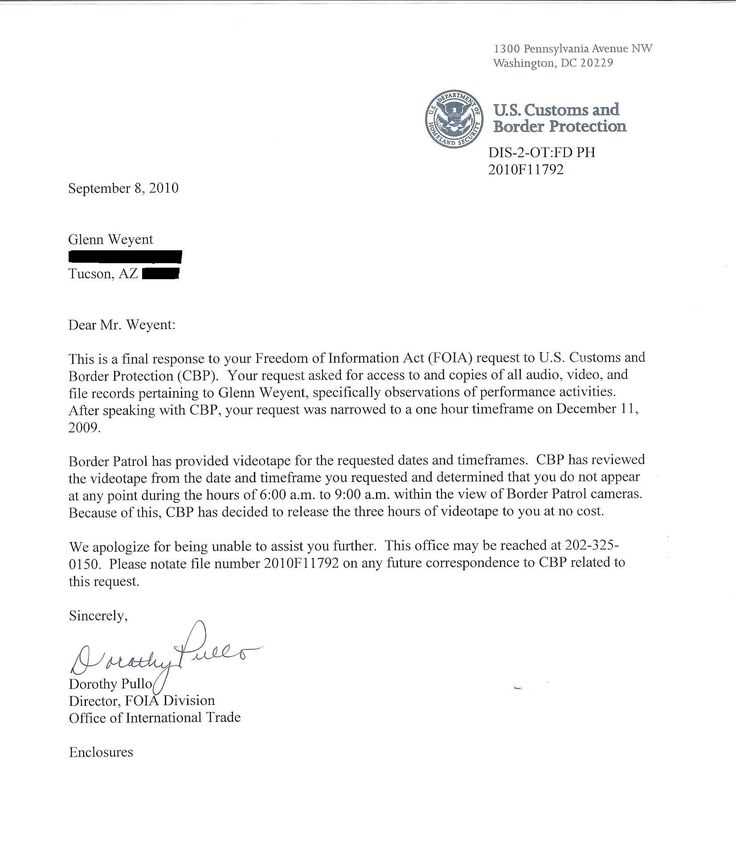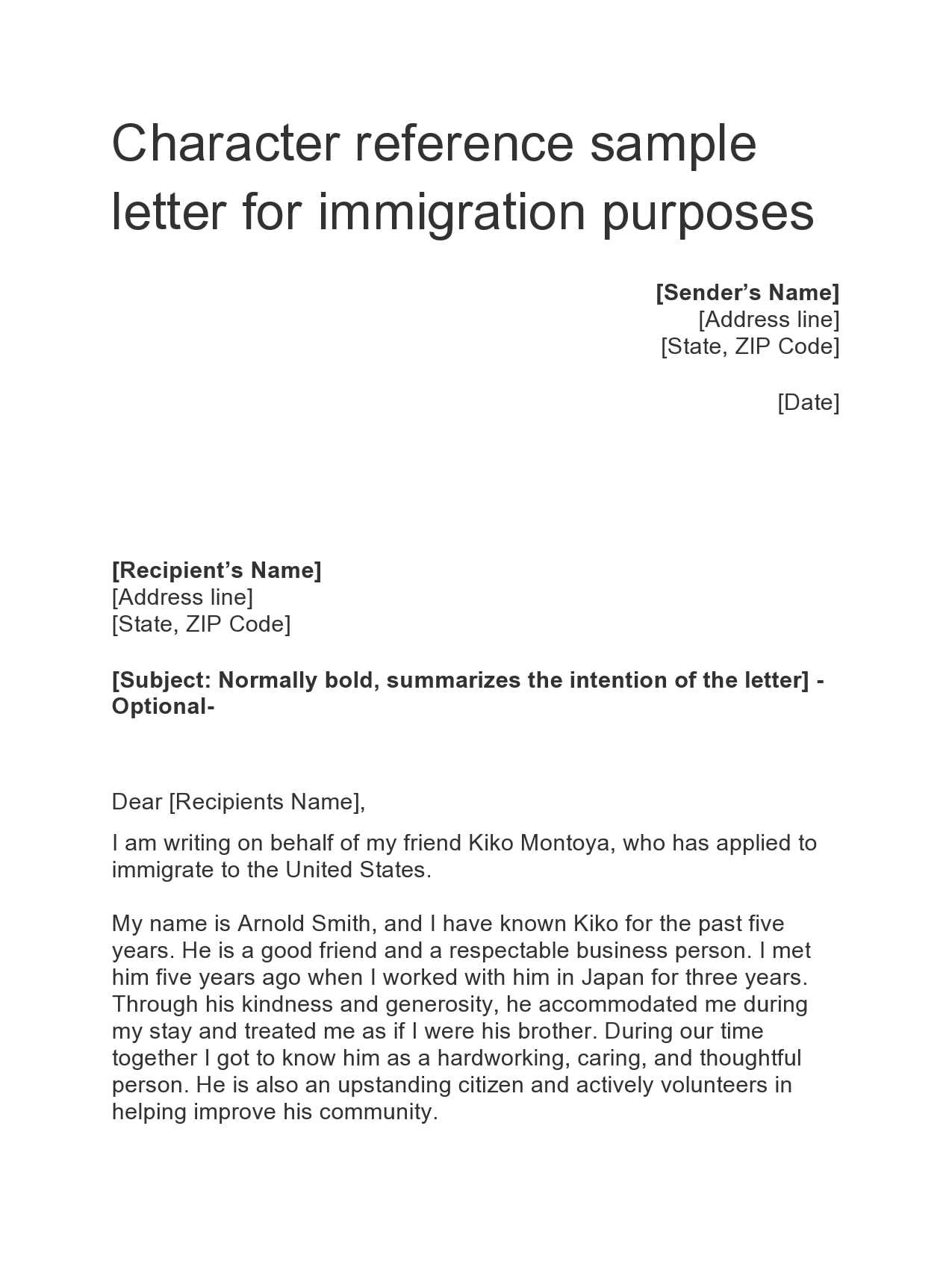Reference letter template for immigration purpose

To create an impactful reference letter for immigration purposes, begin by clearly stating your relationship with the applicant. Specify how long you’ve known them and in what capacity, such as a colleague, employer, or mentor. This establishes the credibility of your letter right away and assures the reader that you are qualified to vouch for the individual’s character and abilities.
Next, highlight the applicant’s qualities that are most relevant to the immigration process. Focus on traits like responsibility, work ethic, and reliability. Avoid vague generalities. Use specific examples to illustrate their contributions, skills, and achievements. For instance, mention a project where the applicant played a key role or a situation where they demonstrated exceptional problem-solving skills.
Conclude the letter with a clear recommendation. Reaffirm the applicant’s suitability for immigration and express your confidence in their future success. Offering contact information for follow-up questions adds an extra layer of transparency and openness.
Remember, your letter should be concise but thorough. Aim for clarity and professionalism, without unnecessary embellishment. A well-structured letter that highlights the applicant’s strengths will make a lasting impression on immigration officers.
Here’s the corrected version:
To ensure clarity and impact, here is an improved version of a reference letter for immigration purposes:
- Start with a clear introduction: Begin by stating who you are, your relationship with the applicant, and your intent to provide a reference.
- Describe the applicant’s character: Focus on qualities that are relevant to the immigration process, such as reliability, work ethic, and adaptability.
- Provide concrete examples: Illustrate the applicant’s qualities with specific anecdotes that demonstrate their strengths and contributions.
- Explain why the applicant is a good candidate for immigration: Highlight the applicant’s potential to contribute to their new community or country based on their skills, experience, or character.
- Close with a strong recommendation: End the letter by reaffirming your full support for the applicant’s immigration process and provide your contact details in case further information is needed.
This version removes unnecessary phrases and focuses on clear, concise recommendations that can be easily understood by immigration officers.
- Choosing the Right Individual to Write Your Reference Letter
Pick someone who knows your work well and has the authority to provide an honest and professional perspective. A current or former employer, supervisor, or colleague who directly interacted with you is an ideal choice. This person should be able to discuss your skills and contributions in a way that supports your immigration application.
Stay away from friends or family. Their personal connection to you may undermine the credibility of the letter. It’s best to select an individual who holds a respected position in your industry and can offer detailed insights into your qualifications.
| Key Factors | Recommended Sources | Not Ideal Sources |
|---|---|---|
| First-hand Knowledge | Supervisors, colleagues, mentors | Family members, friends |
| Authority and Position | Managers, industry leaders, senior colleagues | Non-professional acquaintances |
| Ability to Provide Specific Examples | Individuals who have worked closely with you | Those who are unfamiliar with your day-to-day work |
Ensure the individual is able to offer a letter that not only speaks to your skills but also provides examples of your work that align with the immigration criteria. A detailed, authoritative reference will enhance your application.
To make a letter of recommendation stand out, focus on providing specific information about the applicant’s character, work ethic, and accomplishments. Here are key details to include:
- Relationship with the Applicant: Clearly state how you know the person and the length of your relationship. This helps establish credibility and context.
- Skills and Strengths: Highlight specific skills or strengths the applicant possesses, giving examples from their experience or performance.
- Achievements and Impact: Mention any notable accomplishments, projects, or contributions the applicant has made, demonstrating their value and influence in the field.
- Personal Qualities: Include information on the applicant’s personality traits, such as reliability, leadership, or teamwork, and how these qualities make them an excellent candidate for immigration purposes.
- Suitability for Immigration: Explain why the applicant would be a strong addition to the country or community they are seeking to join, based on their skills and contributions.
- Contact Information: Provide your contact details for verification or follow-up questions, ensuring the reader can reach you for further information.
Including these key points ensures a letter of recommendation that is both informative and compelling for immigration purposes.
Begin the recommendation letter with a brief introduction. State your name, position, and the capacity in which you know the applicant. Be specific about the length of your relationship and your direct interaction with them. This establishes your credibility as a reference.
Body of the Letter

In the body of the letter, focus on the applicant’s skills, work ethic, and character. Provide concrete examples of how they excel in their field or meet the requirements relevant to their immigration purpose. Avoid general praise and instead highlight specific accomplishments that demonstrate their qualifications.
Conclusion
End with a strong endorsement. Reaffirm your support for the applicant’s immigration application and express confidence in their ability to contribute positively. Offer to provide further information if needed, and include your contact details to allow the immigration authorities to reach out for additional verification.
Focus on maintaining a balance between professionalism and warmth. Be clear and concise in your language, while also reflecting a genuine sense of the candidate’s character. Use positive but straightforward adjectives like “dedicated,” “reliable,” or “hardworking” to describe the person’s qualities, and provide concrete examples to support these claims. Avoid exaggerated praise that might feel insincere.
Keep the tone respectful and polite, ensuring the letter feels like a professional endorsement, while also conveying a sense of personal connection. Use direct language, but don’t shy away from expressing enthusiasm about the candidate’s abilities. Personal anecdotes or experiences can reinforce your points and make the reference feel more authentic and relatable.
Finally, steer clear of overly formal or stiff language. The reference should come across as approachable and credible, reflecting both your professional relationship and your personal perspective on the person’s skills and character.
To write a strong recommendation letter, focus on specifics and avoid vague or general statements. A common mistake is using overly broad language, such as describing someone as “hardworking” without providing examples. Instead, demonstrate their dedication with concrete instances of their work ethic and achievements. This adds credibility and shows genuine support.
Failure to Customize the Letter
Another frequent error is using a one-size-fits-all template without tailoring it to the individual’s unique qualities. A letter that feels generic can weaken the applicant’s case. Make sure to personalize the content based on the person’s skills, character, and accomplishments relevant to the immigration process.
Excessive Length or Unnecessary Details

Being concise is key. Avoid lengthy descriptions that detract from the main points. Stick to relevant facts that directly highlight the person’s qualifications for the immigration process. Focus on the most impactful attributes, such as work accomplishments or community involvement, that align with the criteria the immigration authorities prioritize.
Avoiding these mistakes will ensure that your recommendation letter makes a meaningful impact and properly supports the individual’s application.
Focus on the specific immigration category the applicant is applying for. For work-based immigration, highlight the applicant’s job skills, contributions, and achievements. Use concrete examples that demonstrate their ability to fulfill the role. For family-based immigration, emphasize the relationship and the applicant’s character, providing context for how they support family life and integration.
Ensure the letter addresses the key criteria required for the immigration process. For example, if applying for a skilled worker visa, provide details of the applicant’s qualifications, experience, and unique capabilities. If the purpose is to support a student visa, emphasize the applicant’s academic performance and commitment to education.
Keep the tone formal and positive. Use specific, verifiable information to build a credible case for the applicant’s suitability. This increases the likelihood that the letter will be accepted as part of the immigration application.
How to Write a Reference Letter for Immigration
Begin with a clear statement of your relationship to the applicant. Specify how long you’ve known them and in what capacity. For example, mention if you were their employer, colleague, or personal acquaintance. This establishes your credibility and relevance to the immigration process.
Structure and Key Points

The letter should start with a formal greeting and an introduction of who you are. Then, focus on the qualities that make the applicant suitable for immigration. Highlight their character, work ethic, or contributions to the community, providing specific examples. Avoid vague or generalized statements. Use clear and concise language to communicate the applicant’s value.
Proof of Credibility
Support your claims with facts. If the applicant has demonstrated leadership or responsibility in a particular setting, describe the situation and their role. Mention any relevant achievements or contributions that directly support their immigration application.
Close the letter by reaffirming your support for the applicant and expressing confidence in their ability to contribute positively to their new community. Ensure that your tone remains professional, yet personable, to show genuine support for their case.